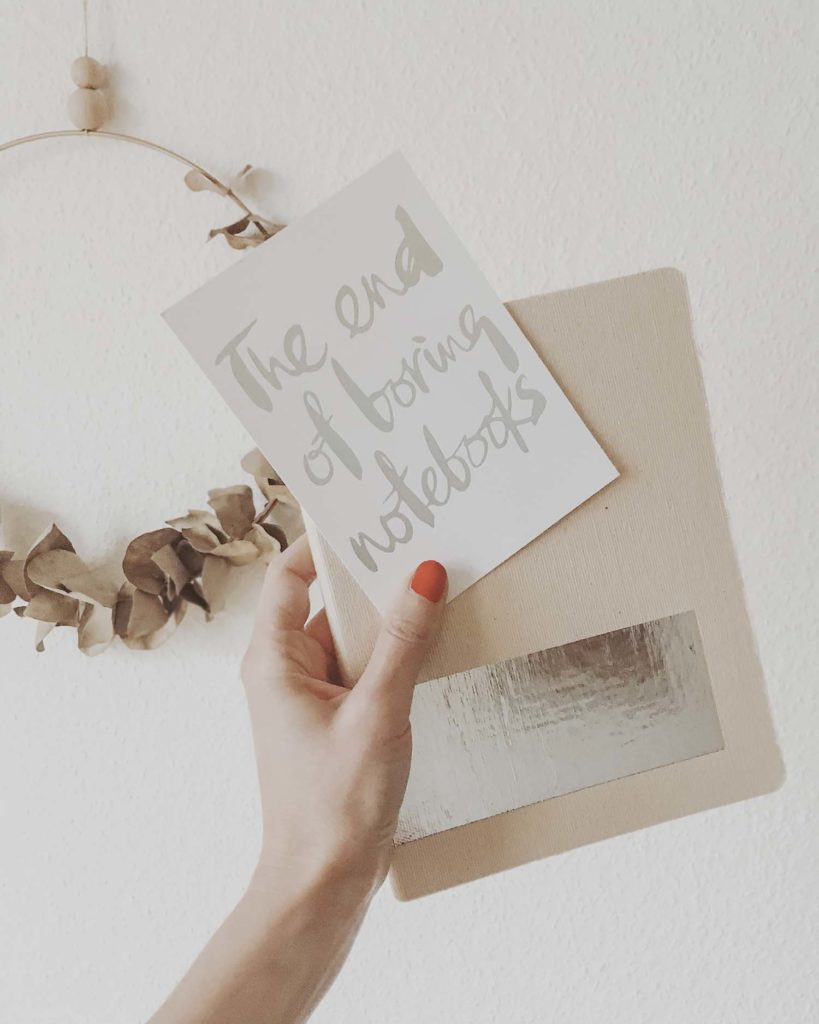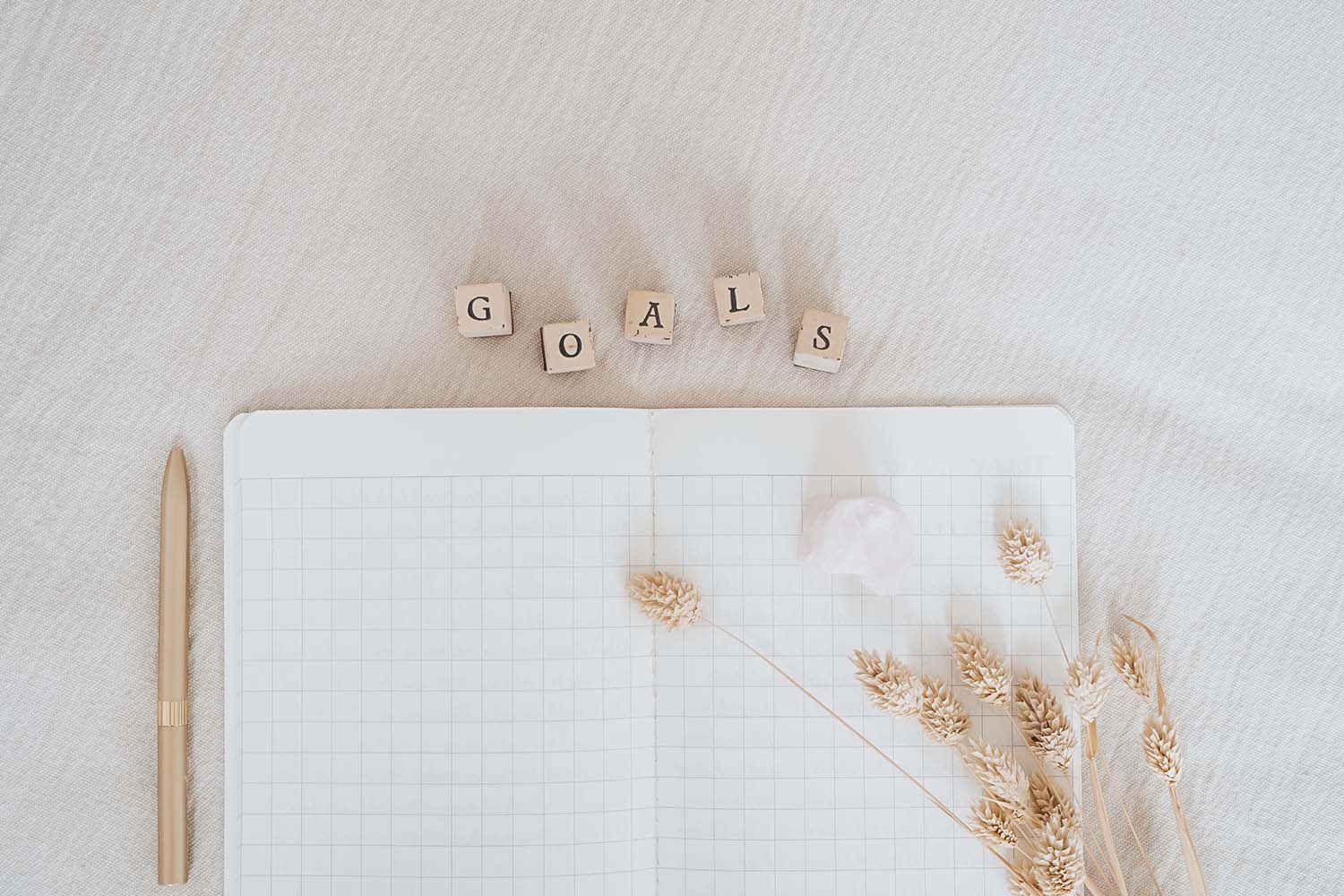More than just a trend – Journaling proves how beneficial and healing writing can be. The self-care routine brings mindfulness and focus in your life and business. Wether you’re an experienced writer or newbie, these five journaling methods are easy to adapt and definitely worth a try.
What is journaling – diary vs journal
While in a diary you’re writing down your thoughts, feelings and experiences in a stream of consciousness, journaling is a more guided technique pursuing a certain purpose. Of course your emotions and thoughts are essential, but the process of writing is more intentional and focused. This makes journaling an effective tool helping you to improve your mental health, accomplish your goals, get organized and productive.
Journaling methods and their benefits
You’re sitting in front of your notebook, but you have no idea how to start and what to write? Don’t worry, there are many journaling methods out there helping you to defeat writer’s block and develop a routine that suits you and your busy life. Here are five powerful techniques to get you started:
1. Bullet journaling – get organized
The bullet journal (short BuJo) is a pretty simple and fast way to organize and plan your life and keep track of things. It is an advanced, more detailed and creative version of a classic calendar, that meets your individual needs.
In your bullet journal you’re not only setting dates and appointments, you manage lists and tasks, set goals and track habits or moods. By doing this, you’re able to organize and reflect your life and business. How you design your journal is totally up to you. You can find inspiration and even templates for many different BuJo spreads online. They are a great way to get started.

2. One line a day – keep your memories
Writing down just one single line every day is an amazing journaling method for the minimalists amongst us. Especially if you don’t have a lot of time for your journaling routine this might be the technique worth trying. Capturing your day in only a few words is a great approach to reflect your experiences. You learn to focus on the nitty-gritty and readjust your priorities if necessary. And at the same time you create a simple and meaningful collection of your memories.
If you practice this routine longterm, this technique is even more effective. The „One Line A Day“ Journal by Chronicle Books is set up for five years, so with just one glance you can see what you did, felt or accomplished on the exact same day in 2022, 2023 and so on. You easily recognize progress and changes in your life.
3. Journaling prompts – creative writing and self-awareness
Journaling prompts are a great way to start with your writing routine. Specific questions and ideas help you to get creative and focus on what to write. Just let your thoughts and words flow and you will gain self-awareness and perspective during this deep process of writing. There’s a reason even therapists use this technique to accompany their practice.
There are many different prompts to use and you can easily come up with your own, if you want to work on a specific topic. Use whatever sparks your imagination – Words, phrases, quotes, stories or even images. Just try it out and see where it leads you to.
4. Gratitude journal – reduce stress and be mindful
You want to reduce stress and boost your wellbeing? A scientifically approved method to welcome positive thoughts and feelings in your life is gratitude journaling. Practicing this method you write down all the things you’re currently grateful for. These can be big, as well as little things, and especially moments right out of your daily routine.
It doesn’t really matter if you practice gratitude journaling daily, weekly or monthly, but the more you do, the more powerful you’ll feel the positive impact of this routine. Your focus will change from stress, anxiety and overthinking to those things that bring you joy and ease. Eventually it will get much easier for you to even notice and be aware of these positive things in your life. Your mind will be calm and you’ll feel way more relaxed and mindful.
Note: A gratitude journal is not supposed to spread toxic positivity by eliminating negative thoughts or experiences all together. It rather helps you to develop a healthy balance between positive and stressful emotions.
5. Setting goals and intentions – self-improvement
If you’re looking to focus on personal and/or professional growth, I recommend to use journaling to define and pursue your goals. In order to transform your intentions into approachable goals this journaling method is way more complex than popular bucket- and endless to-do-lists.
Specific questions and prompts guide you to define meaningful intentions, help you to differentiate between long-, mid- and short-term goals and let you derive individual milestones and next steps you can take. This way vague and often unfulfilled ideas turn into precise actions, that lead you closer to reaching your goals.

How do I find my journaling style?
The journaling methods introduced in this article are meant to give you a glimpse inside the world of journaling. There are a ton of different techniques and ways to develop a journaling routine. Which style works best for you depends on what you want to achieve and feels most comfortable to you. Do you want more focus, are you looking for personal or professional growth or would you like to reduce stress and anxieties?
Once you defined your „why“, deciding which method you should use will be totally easy. And by the way, you can totally combine different techniques and adjust them to your personal preferences. Just try it out. Choose whatever works best for you, feels natural and brings you joy. After all journaling is supposed to make you feel good and it is way easier to develop a daily routine when you’re having fun, right?


Pingback: How to stay organized: Mindful tools + tips for freelancers
Pingback: How To Keep A Travel Journal | Consciously Curating